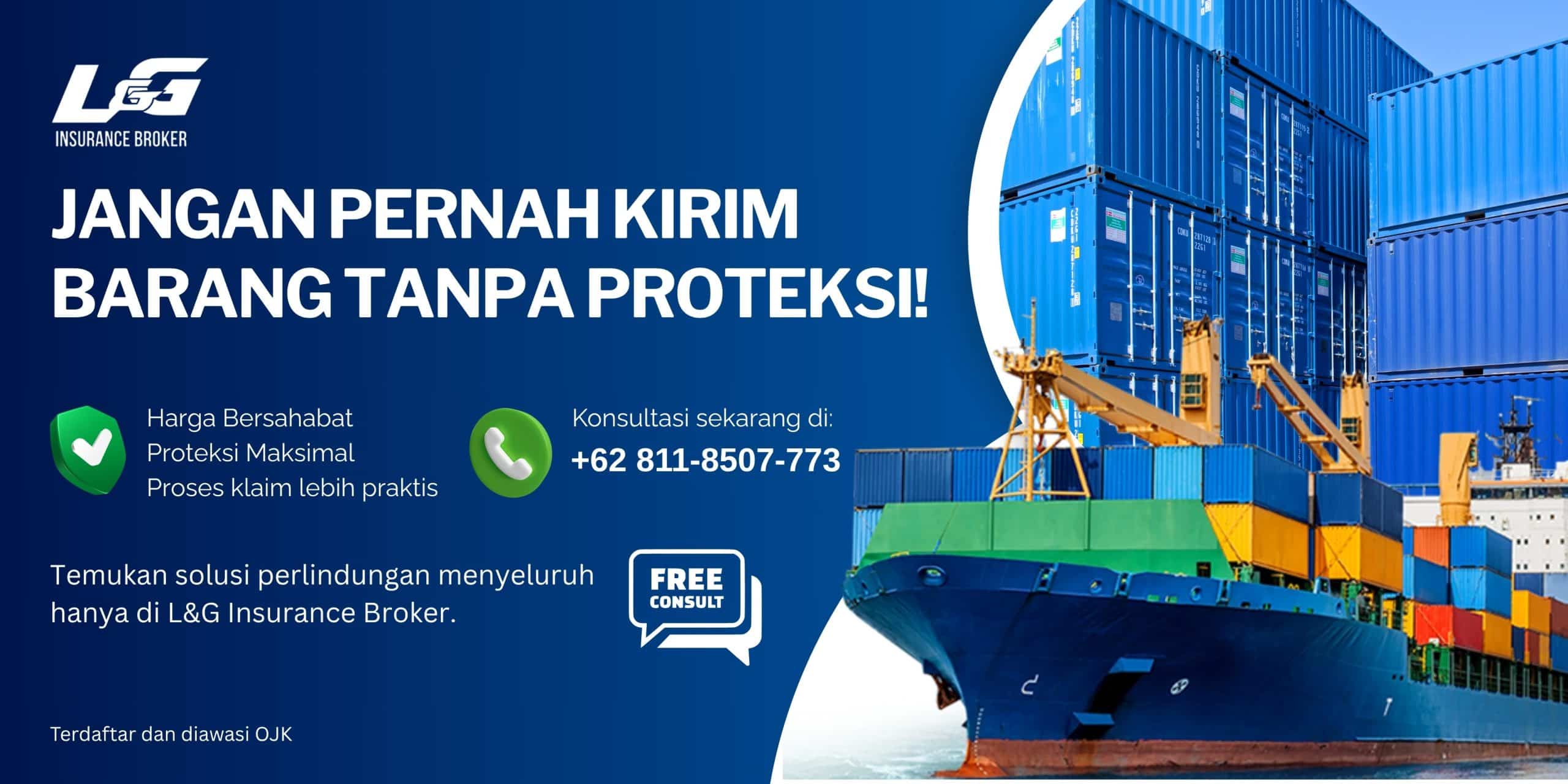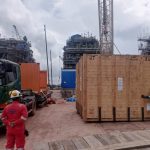Liga Asuransi – Dear risk takers, risk managers, forwarders, shippers, business owners, traders, insurers, and all readers,
Welcome to our insightful blog dedicated to navigating the realms of risk management and insurance. As a seasoned insurance broker, I’m excited to delve into the intricate world of sugar transportation risks and insurance. From understanding logistical challenges to ensuring seamless supply chains, we’ll explore how insurance plays a pivotal role in safeguarding these vital operations. If you find this topic intriguing, please share this article with your network. Together, let’s unravel the complexities and ensure the security of sugar shipments across the globe.
The sugar industry in Indonesia plays a vital role in both its economy and agriculture. Indonesia is among the world’s largest producers of sugarcane, primarily grown in regions like Java, Sumatra, and Sulawesi. The industry supports millions of farmers and workers, contributing significantly to rural livelihoods and economic stability.
Indonesia’s sugar production involves both large-scale plantations and smaller farms, reflecting a diverse agricultural landscape. Sugarcane cultivation benefits from the country’s tropical climate and fertile soils, enabling multiple harvests per year. After harvesting, sugarcane undergoes processing in mills to extract raw sugar, which is then further refined into white or brown sugar varieties.
Sugar is a fundamental ingredient in Indonesia’s food and beverage industries, meeting domestic demand and supporting exports to regional markets. Additionally, it plays a crucial role in food security, ensuring a stable supply of this essential commodity for consumers nationwide.
Government policies and investments in infrastructure continue to shape the industry’s growth and productivity. Challenges such as fluctuating global prices, environmental sustainability, and modernization of production methods are areas of ongoing focus for the Indonesian sugar sector.
Importance of Sugar Transportation
Sugar transportation is crucial for Indonesia’s economy and food security. As a key agricultural product, sugar needs efficient and reliable transportation networks to move from production areas to consumers across the archipelago.
Indonesia’s diverse geography, with its many islands, presents logistical challenges for transporting sugar. Efficient transportation ensures that sugar reaches markets and consumers on time, supporting food industries, retailers, and households nationwide.
Timely delivery of sugar is essential for maintaining food supply chains, stabilizing prices, and meeting consumer demand. It also supports economic activities in rural areas where sugar is produced, providing income for farmers and workers.
Effective transportation systems for sugar contribute to Indonesia’s economic growth by facilitating trade and exports. They also play a role in national food security by ensuring a steady supply of this essential commodity.
Overall, efficient sugar transportation networks are integral to sustaining Indonesia’s agricultural sector, supporting economic development, and ensuring food availability for its population.
Types of Sugar Transported
There are several types of sugar commonly transported to meet various market demands and industrial needs. These types include:
Raw Sugar
Raw sugar is the unrefined form of sugar derived directly from sugarcane or sugar beets. It contains impurities and requires processing before it becomes suitable for consumption.
Refined Sugar
Refined sugar undergoes processing to remove impurities and achieve higher purity levels. It is the most common type found on store shelves and used in households and food manufacturing.
Brown Sugar
Brown sugar retains some molasses from the refining process, giving it a distinctive flavor and color. It is often used in baking and cooking to add a richer taste to dishes.
Liquid Sugar
Liquid sugar is a concentrated syrup form of sugar used in beverage production, baking, and confectionery. It is easier to handle in industrial settings where precise measurements are crucial.
Specialty Sugars
These include varieties such as powdered sugar (finely ground refined sugar), icing sugar (very finely ground sugar mixed with cornstarch), and demerara sugar (large-grain, pale brown sugar).
Each type of sugar has specific uses and applications in various industries, from food and beverage manufacturing to pharmaceuticals and cosmetics. The transportation of these sugars requires careful handling to maintain their quality and ensure they reach their destination intact and ready for further processing or consumption.
Common Modes of Sugar Transportation
The transportation of sugar involves several common modes tailored to ensure efficient delivery from production centers to consumers:
Bulk Transport by Ship
Large quantities of sugar are often transported via bulk carriers and container ships across oceans. This method is efficient for international trade, ensuring vast quantities of sugar reach global markets.
Rail Transport
Railways are crucial for transporting sugar overland, especially in countries with extensive rail networks. Rail cars can carry substantial loads of sugar, providing a cost-effective and reliable means of distribution.
Trucking
Within countries or regions, sugar is transported by trucks from refineries or distribution centers to local markets, warehouses, and retail outlets. Trucks offer flexibility in reaching destinations where other modes of transport may be less practical.
Pipeline Transport
In some specialized cases, liquid sugar or syrup may be transported via pipelines. This method is efficient for continuous flow and minimal handling, reducing the risk of contamination or spoilage.
Intermodal Transport
Combining multiple modes, such as trucking to rail hubs or ports, and then transferring to ships or trains, allows for seamless movement of sugar across different geographical regions or between continents.
Each mode of transportation is chosen based on factors like distance, cost-effectiveness, infrastructure availability, and the perishable nature of sugar. Ensuring reliable transportation is essential to maintaining supply chains and meeting consumer demand for this essential commodity.
Key Stakeholders in Sugar Transportation
Key stakeholders in the transportation of sugar play crucial roles in ensuring the smooth flow of this essential commodity from production to consumption:
Sugar Producers
These include sugarcane or sugar beet farmers and mills that process raw sugar into refined products. They initiate the supply chain by cultivating and harvesting sugar crops.
Logistics and Transport Companies
Companies specializing in logistics manage the physical movement of sugar. They operate fleets of trucks, oversee rail transport, and manage shipping logistics to ensure timely delivery from refineries to distribution centers and markets.
Port Authorities and Shipping Companies
Ports serve as vital hubs for importing and exporting sugar globally. Shipping companies and port authorities facilitate the loading and unloading of bulk carriers and container ships, ensuring efficient maritime transport.
Wholesalers and Distributors
These entities purchase sugar in bulk from producers and transporters for distribution to retailers, industrial users, and food processors. They play a crucial role in ensuring sugar availability across various markets.
Retailers and End-Users
These are the final stakeholders in the sugar supply chain, including supermarkets, convenience stores, restaurants, and households. They rely on efficient transportation to maintain stock levels and meet consumer demand for sugar products.
Government Agencies and Regulatory Bodies
These entities oversee safety standards, environmental regulations, and trade policies related to sugar transportation. They ensure compliance with legal requirements and promote fair trade practices in the sugar industry.
Effective collaboration among these stakeholders is essential to optimize supply chain efficiency, minimize transportation costs, ensure product quality and safety, and meet market demand for sugar products globally.
Potential Risks in Sugar Transportation
Transporting sugar involves several potential risks that can impact the supply chain and pose challenges to stakeholders:
Physical Damage and Contamination
Sugar shipments are vulnerable to physical damage during handling and transportation. Improper loading, unloading, or storage practices can lead to spillage, breakage of containers, and contamination with foreign substances.
Weather and Climate Hazards
Extreme weather conditions such as storms, heavy rainfall, and humidity can affect sugar quality and cause delays in transportation. Storage facilities and transportation modes exposed to weather elements may lead to deterioration of sugar quality.
Theft and Pilferage
Sugar is a valuable commodity that can be targeted by thieves. Hijacking of trucks, pilferage from warehouses or storage facilities, and theft during transit pose security risks and financial losses to transporters and insurers.
Regulatory Compliance
Compliance with transportation regulations and customs procedures is crucial. Failure to meet regulatory standards can lead to delays in shipments, fines, and penalties, affecting operational efficiency and financial stability.
Supply Chain Disruptions
Disruptions in logistics, such as strikes, infrastructure failures, or transport accidents, can disrupt the flow of sugar from production to market. These disruptions may lead to supply shortages, increased transportation costs, and reputational damage.
Market Fluctuations
Changes in sugar prices and market demand can affect transportation planning and logistics. Fluctuations in supply and demand may lead to overstocking or shortages, impacting financial outcomes for stakeholders.
Effective risk management strategies, including proper packaging, securing transportation routes, implementing quality control measures, and comprehensive insurance coverage, are essential to mitigate these risks and ensure the safe and efficient transportation of sugar across domestic and international markets.
Risk Management Strategies
Effective risk management strategies for sugar transportation involve proactive measures to mitigate potential risks:
Quality Control
Implement stringent quality control measures throughout the supply chain to ensure sugar integrity and prevent contamination or spoilage.
Transportation Planning
Optimize transportation routes and modes based on weather conditions, traffic patterns, and security considerations to minimize risks of delays and disruptions.
Security Measures
Enhance security protocols, including GPS tracking, secure storage facilities, and trained personnel, to mitigate theft and pilferage risks.
Compliance and Documentation
Ensure compliance with transportation regulations, customs procedures, and safety standards to avoid legal penalties and delays.
Insurance Coverage
Obtain comprehensive insurance coverage tailored to the specific risks of sugar transportation, including coverage for physical damage, theft, liability, and business interruption.
Emergency Response Plans
Develop and regularly update emergency response plans to quickly address accidents, spills, or other unforeseen events, minimizing potential impacts on operations and reputation.
By integrating these strategies into daily operations, stakeholders can safeguard the transportation of sugar, maintain supply chain efficiency, and protect against financial losses and reputational damage.
Insurance Solutions
Insurance solutions for sugar transportation encompass comprehensive coverage tailored to mitigate specific risks:
Protects against physical loss or damage to sugar during transit, whether by road, rail, sea, or air. This coverage includes incidents like accidents, theft, fire, and natural disasters.
Covers legal liabilities arising from third-party bodily injury, property damage, or environmental pollution caused by sugar transportation activities.
Business Interruption Insurance
Offers financial compensation for revenue losses due to transportation disruptions, such as accidents or delays, ensuring continuity of operations.
Specialized Coverage
Includes specific endorsements for risks unique to sugar transportation, such as contamination, infestation, or deterioration in quality.
Risk Assessment and Management
Insurance providers offer expertise in assessing and managing risks, helping stakeholders implement preventive measures, and improving overall transportation safety.
By partnering with experienced insurers and selecting tailored insurance solutions, stakeholders in the sugar industry can mitigate financial exposures, ensure compliance with regulatory requirements, and maintain operational resilience throughout the transportation process.
The importance of the role of an insurance broker
The role of an insurance broker is crucial in navigating the complex landscape of insurance needs and solutions. Acting as intermediaries between insurance companies and clients, brokers provide invaluable expertise and personalized service to individuals and businesses alike.
Firstly, insurance brokers assess the unique risks faced by their clients. They delve into specific industries, such as manufacturing, construction, or healthcare, to understand the nuanced risks and coverage requirements. This tailored approach ensures that clients receive comprehensive insurance policies that adequately protect their assets and operations.
Secondly, brokers offer independent advice and advocacy. Unlike agents who work for specific insurance companies, brokers represent the client’s interests. They compare policies from various insurers, negotiate terms and premiums, and advocate for fair claims settlements in case of loss or damage.
Thirdly, brokers provide ongoing support throughout the insurance lifecycle. From initial policy placement to annual renewals and claims processing, brokers serve as trusted advisors. They keep clients informed about market trends, regulatory changes, and new coverage options, enabling informed decision-making.
Ultimately, the role of an insurance broker extends beyond mere transactional service to fostering long-term relationships built on trust and expertise. By leveraging their industry knowledge and network, brokers empower clients to navigate uncertainties confidently and safeguard their financial interests effectively.
Why use L&G Insurance Broker in Indonesia?
L&G Insurance Broker stands out in Indonesia’s insurance landscape as a trusted partner committed to delivering exceptional service and comprehensive coverage solutions. With a deep understanding of local market dynamics and global insurance trends, L&G Insurance Broker caters to diverse client needs across various sectors including construction, manufacturing, and healthcare.
What sets L&G Insurance Broker apart is its personalized approach to insurance. We prioritize understanding the unique risks faced by each client and tailoring insurance packages that provide robust protection against potential threats. Our experienced team of brokers navigates the complexities of insurance policies, ensuring clients receive competitive premiums without compromising on coverage.
Moreover, L&G Insurance Broker emphasizes long-term relationships built on integrity and reliability. We provide ongoing support from policy inception through claims processing, offering proactive advice and advocacy during every step of the insurance journey.
Whether you’re a multinational corporation or a local business, L&G Insurance Broker is dedicated to safeguarding your interests with innovative insurance solutions. Trust L&G Insurance Broker to be your partner in risk management, ensuring peace of mind and continuity for your operations in Indonesia’s dynamic business environment.
For all your insurance needs, Call L&G Insurance Broker now!
—
MARINE CARGO INSURANCE FOR CHEMICAL SHIPMENT WILL BE SAFER WITH US – DON’T WASTE YOUR TIME AND CALL US NOW
24 JAM L&G HOTLINE: 0811-8507-773 (CALL – WHATSAPP – SMS)
website: lngrisk.co.id
Email: customer.support@lngrisk.co.id
—






















